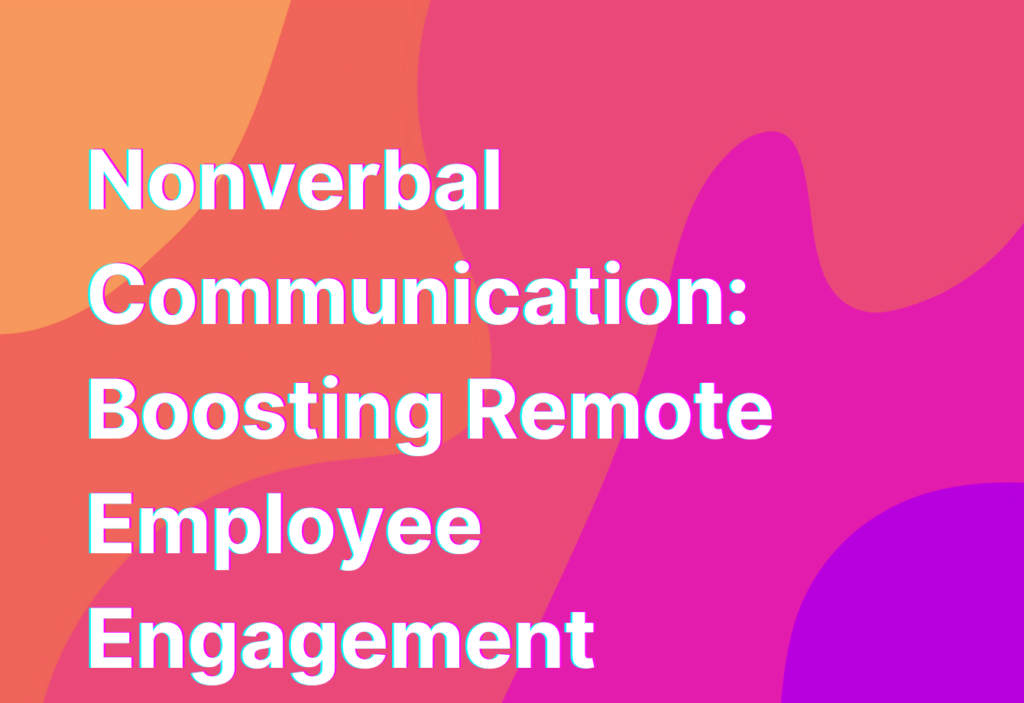Boosting Remote Employee Engagement through Nonverbal Communication
Working remotely has become increasingly popular in recent years, and with the current global situation, it has become the new norm for many employees. While remote work offers numerous benefits, such as flexibility and increased productivity, it also presents unique challenges, particularly when it comes to communication. In a traditional office setting, nonverbal cues play a significant role in conveying messages and building relationships. However, in a remote work environment, nonverbal communication can be easily overlooked or lost. In this article, we will explore the importance of nonverbal communication in remote work and provide tips on how to boost employee engagement through nonverbal cues.
The Power of Nonverbal Communication
Nonverbal communication refers to the messages we convey through facial expressions, body language, gestures, and tone of voice. It is an essential aspect of human interaction, as it helps us understand and interpret the underlying meaning behind words. In a remote work setting, where face-to-face interactions are limited, nonverbal cues become even more crucial in establishing trust, building rapport, and fostering a sense of connection among team members.
Research has shown that nonverbal communication accounts for a significant portion of our overall communication. In fact, studies suggest that nonverbal cues can convey up to 93% of our intended message. This means that relying solely on written or verbal communication can lead to misunderstandings and misinterpretations, ultimately hindering effective collaboration and employee engagement.
Nonverbal Cues in a Remote Work Environment
While remote work may limit the opportunities for in-person interactions, there are still ways to incorporate nonverbal cues into your communication strategies. Here are some key nonverbal cues to consider:
- Facial Expressions: Encourage team members to use video conferencing tools whenever possible to allow for facial expressions to be seen. Smiling, nodding, and maintaining eye contact can help convey engagement and understanding.
- Body Language: Even though you may not be physically present with your team, your body language can still be communicated through video calls. Sit up straight, use open gestures, and maintain an attentive posture to show that you are actively engaged.
- Tone of Voice: Pay attention to the tone of your voice during virtual meetings and conversations. A warm and enthusiastic tone can help convey positivity and engagement, while a monotone or disinterested tone can have the opposite effect.
- Gestures: Use hand gestures to emphasize key points or to show agreement during video calls. However, be mindful of excessive or distracting gestures that may detract from your message.
- Active Listening: Nonverbal cues also play a role in active listening. Show that you are actively engaged by nodding, using facial expressions, and providing verbal cues such as “mm-hmm” or “I see” to indicate understanding.
Overcommunication: The Key to Remote Employee Engagement
When it comes to remote work, overcommunication is key. Without the benefit of in-person interactions, it is essential to be proactive in your communication efforts. Overcommunication involves providing clear and concise information, setting expectations, and actively seeking feedback. By overcommunicating, you can ensure that your nonverbal cues are effectively conveyed and understood by your team members.
One effective way to boost employee engagement through overcommunication is by utilizing various communication channels. While email may be the primary mode of communication for remote teams, it is often limited in conveying nonverbal cues. Consider incorporating video calls, instant messaging platforms, and project management tools like Trello or Asana to enhance communication and foster a sense of connection.
Additionally, make an effort to schedule regular check-ins and virtual team-building activities. These interactions provide opportunities for team members to connect on a more personal level, strengthening relationships and improving overall engagement. Remember, remote work doesn’t have to mean isolation; it can be an opportunity to build a strong and connected team.
By prioritizing nonverbal communication and embracing overcommunication, you can boost employee engagement and create a more productive and connected remote work environment.
Wrapping Up
Nonverbal communication plays a crucial role in remote work, as it helps convey messages, build relationships, and foster a sense of connection among team members. By incorporating nonverbal cues such as facial expressions, body language, tone of voice, and gestures, you can enhance communication and boost employee engagement. Remember to prioritize overcommunication and utilize various communication channels to ensure that your nonverbal cues are effectively conveyed and understood. With these strategies in place, you can create a more productive and connected remote work environment.
For more tips on boosting employee engagement through overcommunication in remote work, check out our article on Overcommunication.


